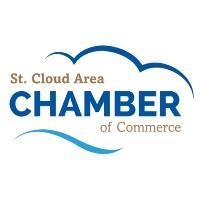Buy 3 Get 1 Free
Purchase 3 months of Chamber Member Happenigs ads, get the 4th for free.
.png)
Chamber Member Happenings is the Chamber's monthly membership information email newsletter. Sent to 2,500+ recipients, it includes information on member events, perks and job openings, with room for advertisements. Purchase 3 months of advertisements at $149/month, receive the 4th month at NO COST!
Holiday Sales in the Bookstore - More than Books! Chamber Members 1 Free item!
Holiday Sales in the Bookstore - More than Books! Chamber Members 1 Free item!

The December monthly feature in the Bookstore is Winter Holidays, Gift Books and Coffee Table Books.
This perk starts Dec 1st, 2025 and goes to the end of the year. Chamber Members get one free item!
This sale includes more than Books! We are adding inventory items everyday.
Media including Movies -DVD's, BLuRay, VHS!, Music CD's, Audio Books, Games.
Greeting Cards -Holiday Cards are 1/2 price @ 2 for 25 cents! FREE MAGAZINES
Puzzles, Games, and more. Miscellaneous items -treasures for you to find.
We have plenty of newer, collectible / vintage and gently used books, including Children's, Young Adult & Sci/Fi Fantasy, Large Print, Mystery & Romance at great prices!
This perk starts Dec 1st, 2025 and goes to the end of the year. Chamber Members get one free item!
This sale includes more than Books! We are adding inventory items everyday.
Media including Movies -DVD's, BLuRay, VHS!, Music CD's, Audio Books, Games.
Greeting Cards -Holiday Cards are 1/2 price @ 2 for 25 cents! FREE MAGAZINES
Puzzles, Games, and more. Miscellaneous items -treasures for you to find.
We have plenty of newer, collectible / vintage and gently used books, including Children's, Young Adult & Sci/Fi Fantasy, Large Print, Mystery & Romance at great prices!
St. Cloud Area Chamber of Commerce




